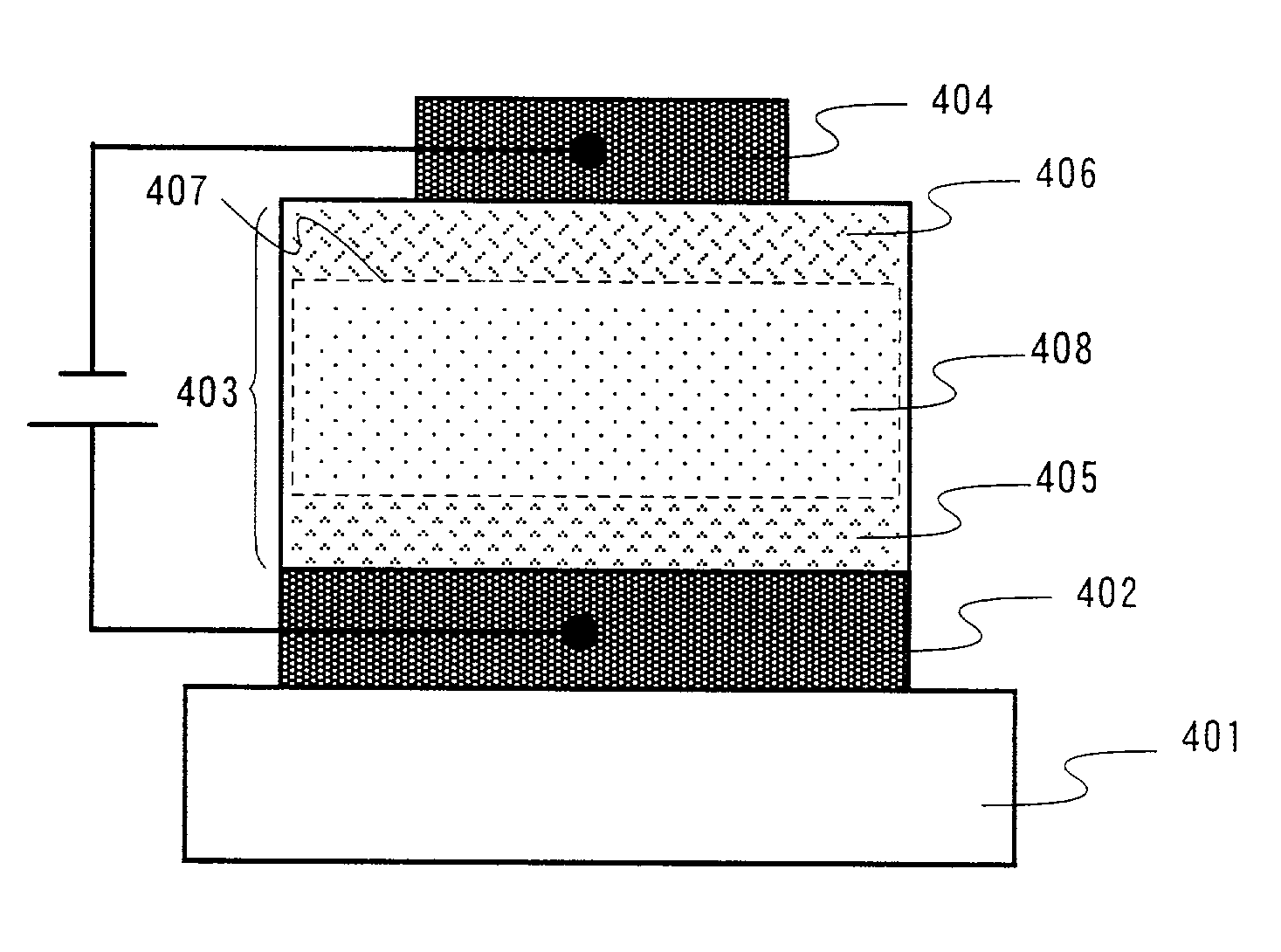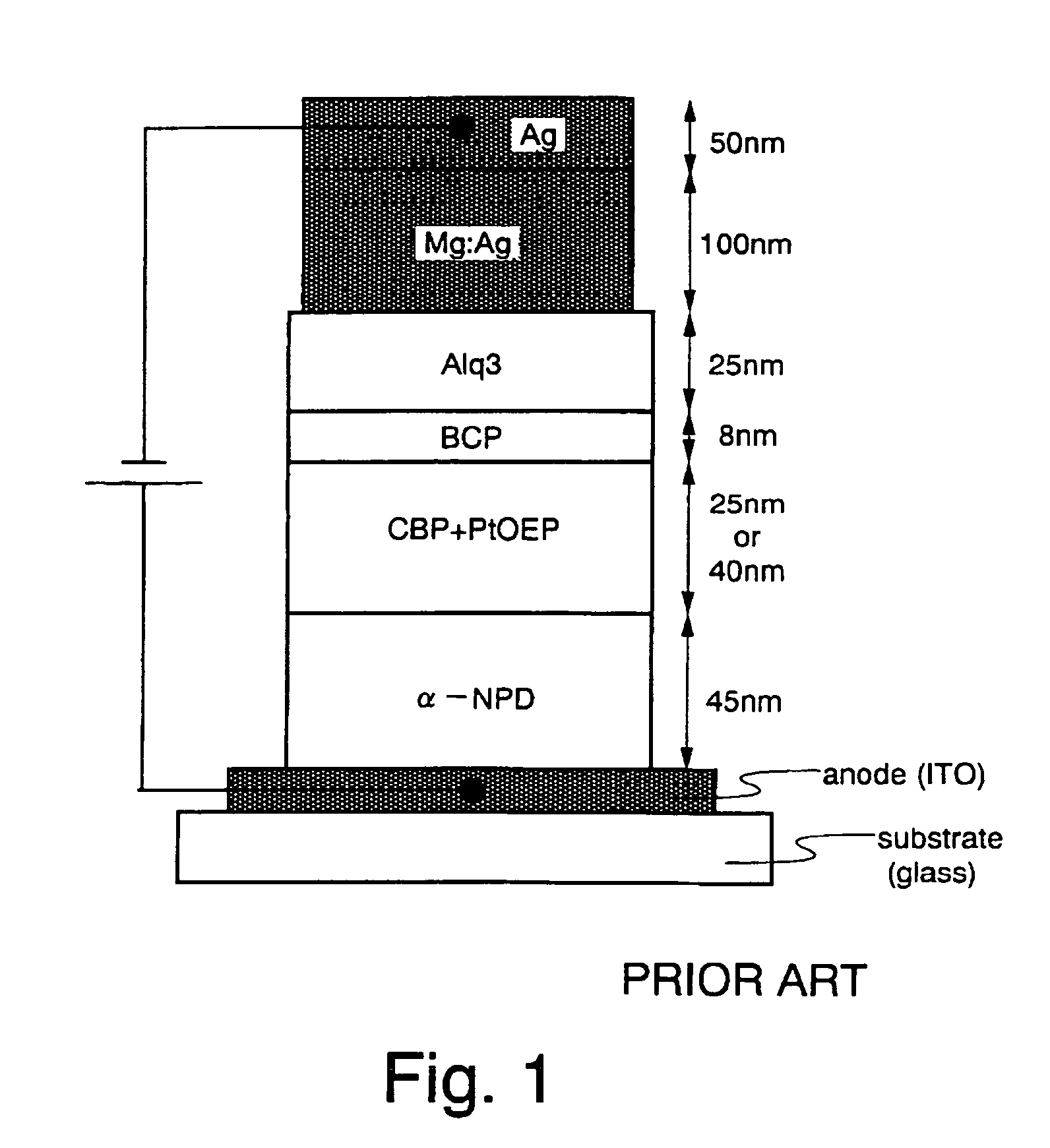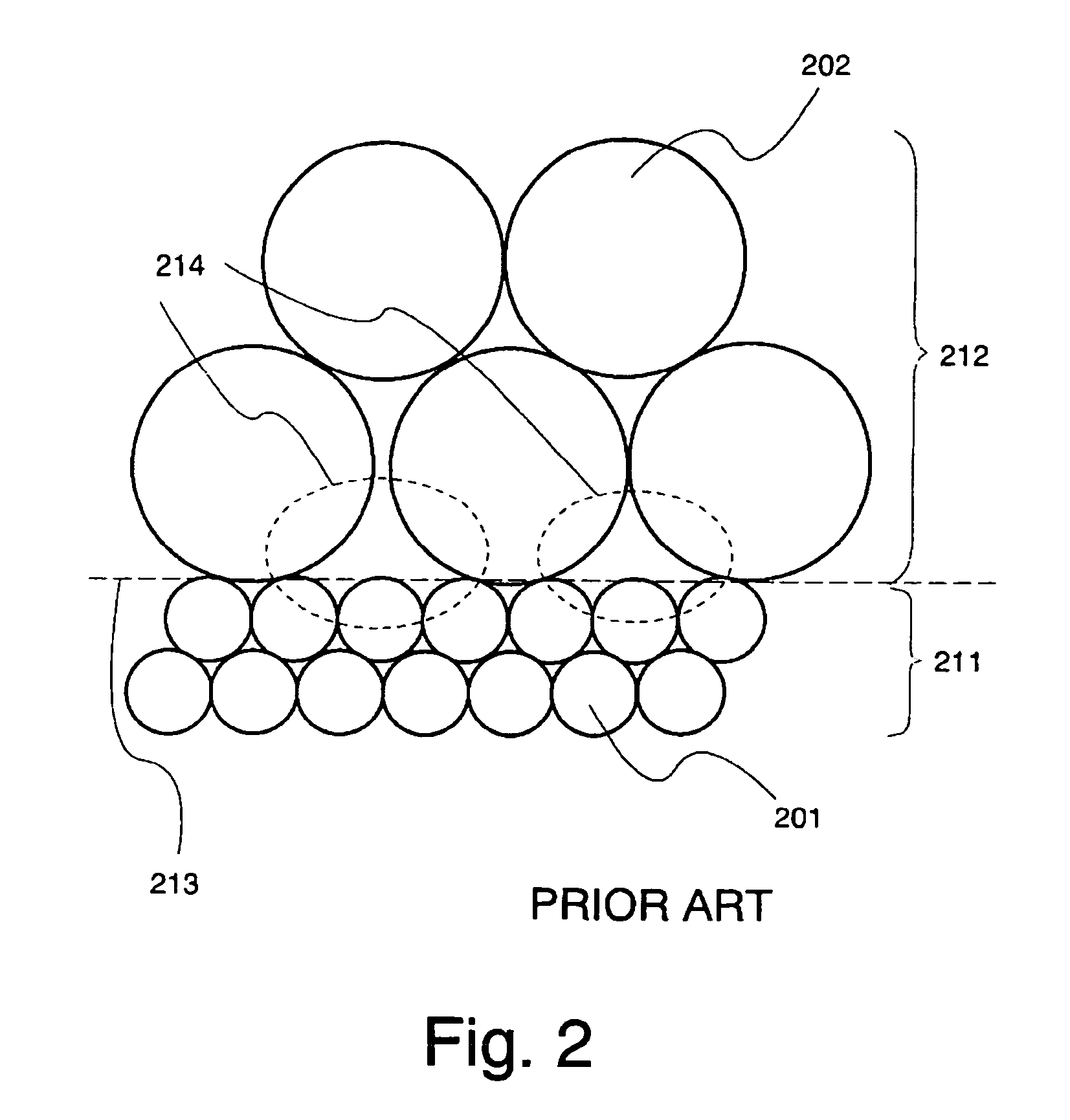Organic light emitting element and display device using the element
a technology of light emitting elements and display devices, which is applied in the direction of discharge tubes/lamp details, organic semiconductor devices, discharge tubes/lamp details, etc., can solve the problems of extremely low emission efficiency, achieve the effect of reducing the brightness of triplet light emitting elements, and prolonging the life of elements
- Summary
- Abstract
- Description
- Claims
- Application Information
AI Technical Summary
Benefits of technology
Problems solved by technology
Method used
Image
Examples
embodiments
[Embodiment 1]
[0109]In this embodiment, an organic light emitting element shown in FIG. 4A, in which an electron injecting region composed of an electron injecting material is inserted between a cathode 404 and an organic compound film 403 is specifically exemplified.
[0110]First, ITO is deposited into a film with a thickness of approximately 100 nm by sputtering, and a glass substrate 401 on which an anode 402 is formed is prepared. The glass substrate 401 having the anode 402 is carried into the vacuum tank as shown in FIGS. 7A and 7B. In this embodiment, five evaporation sources are needed since five kinds of materials (four kinds corresponding to organic compounds and one kind corresponding to metal to be a cathode) are evaporated.
[0111]Then, α-NPD that is the hole transporting material is evaporated at an evaporation rate of 3 Å / s to form a hole transporting region with a thickness of 40 nm. Thereafter, while the evaporation rate for α-NPD is fixed at 3 Å / s, evaporation of BAlq2...
embodiment 2
[Embodiment 2]
[0114]In this embodiment, an organic light emitting element shown in FIG. 5 is specifically exemplified.
[0115]First, ITO is deposited into a film with a thickness of approximately 100 nm by sputtering, and a glass substrate 501 on which an anode 502 is formed is prepared. The glass substrate 501 having the anode 502 is carried into a vacuum tank as shown in FIGS. 7A and 7B. In this embodiment, eight evaporation sources are needed since eight kinds of materials (seven kinds corresponding to organic compounds and one kind corresponding to metal to be a cathode) are evaporated.
[0116]Then, after CuPc that is the hole injecting material is evaporated by 10 nm to form a hole injecting region 503, the evaporation of α-NPD that is the hole transporting material is started while CuPc is vaporized, whereby a mixed region 511 composed of CuPc and α-NPD is formed. The mixed region 511 is set to have a thickness of 10 nm.
[0117]Next, the evaporation of CuPc is stopped, and only α-NP...
embodiment 3
[Embodiment 3]
[0122]In this embodiment, the structure of each pixel of the display device shown in FIGS. 9A to 9E, is specifically exemplified. The evaporation device shown in FIG. 8 is used as the evaporation device to thereby form each pixel. Note that the reference numerals in FIG. 8 and FIGS. 9A to 9E are referred herein below.
[0123]First, the substrate shown in FIG. 9A is carried into the evaporation chamber 801 for red pixel, and a triplet light emitting element for red color as shown in FIG. 10A is manufactured. Here, CuPc is the hole injecting material, α-NPD is the hole transporting material. BAlq2 is the electron transporting material, and Alq3 is the electron injecting material. PtOEP is doped into a mixed region composed of α-NPD and BAlq2. The weight ratio thereof is set to α-NPD:BAlq2:PtOEP=20:80:4. Note that attention is paid to in order that intervals are not occurred between CuPc and α-NPD and between BAlq2 and Alq3 to thereby prevent the formation of an impurity la...
PUM
 Login to View More
Login to View More Abstract
Description
Claims
Application Information
 Login to View More
Login to View More - R&D
- Intellectual Property
- Life Sciences
- Materials
- Tech Scout
- Unparalleled Data Quality
- Higher Quality Content
- 60% Fewer Hallucinations
Browse by: Latest US Patents, China's latest patents, Technical Efficacy Thesaurus, Application Domain, Technology Topic, Popular Technical Reports.
© 2025 PatSnap. All rights reserved.Legal|Privacy policy|Modern Slavery Act Transparency Statement|Sitemap|About US| Contact US: help@patsnap.com



